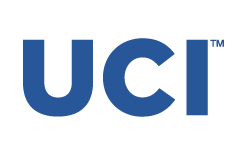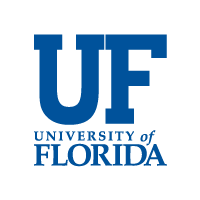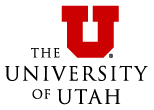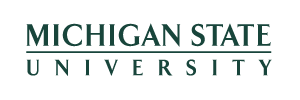NEES News
NEES legislative outreach highlighted in EFRC newsletterReprinted with permission from the DOEReaching Beyond the Ivory Tower: Outreach and the CommunityScientists go the extra mile to give back to their communities Victoria K. DavisCommunicating science at all levels and in all areas of the world is a significant aspect of furthering scientific exploration, enabling new technological innovations, and encouraging public support for science. Outreach that helps educate others about research done within Energy Frontier Research Centers (EFRCs) can take many forms. These are several EFRC participants’ stories about the scientific outreach they have carried out in their local communities, nationally, and even globally. Research faculty and graduate students at the Center for Solar Fuels (UNC) EFRC regularly participate in outreach within the Chapel Hill-Durham-Raleigh area in North Carolina through programs such as Energy LEAP (Literacy, Engagement and Action Program), which is a weeklong summer camp for local high school students. As part of the program, many graduate students volunteered to run an energy-themed Science Café, where they had the opportunity to talk to high school students about UNC EFRC research.
 Erica James is a graduate student at the University of North Carolina at Chapel Hill who is working on her Ph.D. in inorganic chemistry. Her UNC EFRC research seeks to characterize the electronic states of semiconductor materials for use in dye-sensitized photoelectrosynthetic cells. She plans to continue doing scientific outreach and communication after graduation. Image courtesy of Erica James Erica James is a graduate student at the University of North Carolina at Chapel Hill who is working on her Ph.D. in inorganic chemistry. Her UNC EFRC research seeks to characterize the electronic states of semiconductor materials for use in dye-sensitized photoelectrosynthetic cells. She plans to continue doing scientific outreach and communication after graduation. Image courtesy of Erica James
Erica James shares her most memorable interaction while at the Science Café: “I showed the high school students some of my data and asked them to interpret the data. I asked them to identify which trace showed the best conditions, and they were able to answer correctly. They were also able to correctly answer several follow-up questions, like what would happen if I change X variable. It felt good knowing that high school students were actively engaging with me about some of the EFRC research I am doing for my Ph.D. thesis.” Postdoctoral scholars, graduate students, and research affiliates of the Photosynthetic Antenna Research Center(PARC) EFRC can apply for outreach mini-grants through the PARC-funded Education & Outreach Mini-Grant program.
 Aaron Collins is an assistant professor of chemistry at Southern New Hampshire University and a PARC research affiliate. His PARC EFRC research involves designing synthetic and biohybrid light-harvesting assemblies for use in artificial photosynthesis applications. He continues to engage in science outreach and will continue to do so throughout his career. Image courtesy of Aaron Collins Aaron Collins is an assistant professor of chemistry at Southern New Hampshire University and a PARC research affiliate. His PARC EFRC research involves designing synthetic and biohybrid light-harvesting assemblies for use in artificial photosynthesis applications. He continues to engage in science outreach and will continue to do so throughout his career. Image courtesy of Aaron Collins
Aaron Collins received a mini-grant to purchase solar energy kits for his outreach activity: “The outreach program targeted seventh-grade students from Manchester, New Hampshire, many of which come from disadvantaged socio-economic backgrounds. The goal of the project was to expand opportunities for students to engage in solar energy concepts. The project took place over three days where 50 seventh-grade students participated in a variety of activities focused on energy.”
 Kaitlyn Faries is a graduate student at Washington University in St. Louis who is working on her Ph.D. in biophysical chemistry. Her PARC EFRC research seeks to understand the early steps of photosynthesis, particularly with pigments such as chlorophyll and how they absorb and convert light energy into chemical energy. She plans to continue doing energy science and outreach. Image courtesy of Kaitlyn Faries Kaitlyn Faries is a graduate student at Washington University in St. Louis who is working on her Ph.D. in biophysical chemistry. Her PARC EFRC research seeks to understand the early steps of photosynthesis, particularly with pigments such as chlorophyll and how they absorb and convert light energy into chemical energy. She plans to continue doing energy science and outreach. Image courtesy of Kaitlyn Faries
Kaitlyn Faries started an outreach program, Science in St. Louis, through PARC sponsorship. This program offers informal science talks featuring local scientists and engineers discussing important discoveries and breakthroughs taking place in the community. Science in St. Louis is now a partnership between St. Louis County Library, PARC, Washington University’s Gephardt Institute for Civic and Community Engagement, and the Academy of Science of St. Louis. Researchers at the Argonne-Northwestern University Solar Energy Research Center (ANSER) EFRC are encouraged to disseminate EFRC research in a multitude of ways. One outstanding individual, Sameer Patwardhan, incorporated his passion for scientific outreach while part of ANSER. He conducted over 25 hands-on workshops for students, teachers, the public, and industry representatives in the United States, India, and Saudi Arabia.
 Sameer Patwardhan was a postdoctoral scholar at Northwestern University. His ANSER EFRC research involved developing computational methods for large-scale screening of materials for photoelectrochemical devices. The success of his outreach initiatives at ANSER motivated him to start his own company, PC Technologies, which seeks to make science and technology widely accessible by creating opportunities, resources, and infrastructure for students around the world. Image courtesy of Sameer Patwardhan Sameer Patwardhan was a postdoctoral scholar at Northwestern University. His ANSER EFRC research involved developing computational methods for large-scale screening of materials for photoelectrochemical devices. The success of his outreach initiatives at ANSER motivated him to start his own company, PC Technologies, which seeks to make science and technology widely accessible by creating opportunities, resources, and infrastructure for students around the world. Image courtesy of Sameer Patwardhan
Patwardhan also used his postdoctoral EFRC research on perovskite solar cells to design an undergraduate laboratory experiment to cheaply and easily fabricate solar panels, and he introduced it into the general chemistry curriculum at Northwestern University: “After publishing an open-access article of the experiment, I have received numerous emails for assistance from students and teachers from around the world. It’s empowering to see such an impact of our work.” One California high school student emailed Patwardhan to thank him for his EFRC research because it helped the student create a project and enter it into a statewide science fair. Likewise, a professor from Puerto Rico emailed Patwardhan telling him that because of his paper, the department plans to incorporate perovskite solar cell experiments into its undergraduate courses. This was echoed many times in the numerous emails Patwardhan received: A university professor from Nigeria wrote: “I saw the work you are doing with undergraduates on perovskite solar cells. We would like to obtain a few kits. … Can we have it shipped to Nigeria?” An undergraduate student from Bristol University, U.K., wrote: “I’d like to thank you for the paper, it has been very helpful and informative and should be very well received here as an experiment.” A postdoctoral student from South Korea wrote: “It’s my strong request that [you] should publish this type of papers more and more and help the student to understand concept and experiments.”
 Martha Heil is the science communicator for the NEES EFRC. She amplifies research results generated at NEES through educational and legislative outreach as well as social and news media. She continues to demonstrate the valuable impacts that result from the funding of science and research at EFRCs. Image courtesy of Martha Heil Martha Heil is the science communicator for the NEES EFRC. She amplifies research results generated at NEES through educational and legislative outreach as well as social and news media. She continues to demonstrate the valuable impacts that result from the funding of science and research at EFRCs. Image courtesy of Martha Heil
Scientists are not the only individuals who play a significant role in disseminating scientific results generated at EFRCs. Administrators also play a crucial role in the success and distribution of EFRC results. One remarkable example of this is Martha Heil, the science communicator for the Nanostructures for Electrical Energy Storage (NEES) EFRC. This center has a brochure program in which the research results of each four-year grant period are summarized and showcased in a brochure using highly technical language. These were originally intended to inform other scientists and the Department of Energy program managers about NEES research, but in 2014, Heil decided to use the brochure as a tool to reach legislators: “I had experience from previous jobs with science policy outreach and decided that the publication of these brochures would make a good opportunity to remind the legislators representing our district and state that their constituents (NEES scientists and students) rely on federal funding of science.” She sent brochures to the senators and representatives who represent each principal investigator at NEES, which was a total of 30 legislators. Congressman Steny Hoyer, the U.S. Representative of the 5thCongressional District of Maryland, sent an unanticipated and exciting response.
 Left: Cover of the brochure summarizing the research accomplishments made under the second four-year grant period. Image courtesy of the University of Maryland; Right: Congratulatory letter from Congressman Steny Hoyer of Maryland’s 5th District after receiving the brochure made under the first four-year grant period. Image courtesy of the University of Maryland Left: Cover of the brochure summarizing the research accomplishments made under the second four-year grant period. Image courtesy of the University of Maryland; Right: Congratulatory letter from Congressman Steny Hoyer of Maryland’s 5th District after receiving the brochure made under the first four-year grant period. Image courtesy of the University of Maryland
Hoyer expressed enthusiastic congratulations for the successful research carried out under the first four-year grant period and wrote that he looked forward to being an advocate for the EFRC research efforts taking place in his district. “I was expecting no response,” Heil said. “But that Representative Hoyer took the time to congratulate NEES in a letter back means that he has a real understanding of and support for science. That’s a win for us all.” Scientific brochures have been made again to showcase the major accomplishments made during the second grant period. This time, Heil plans to send brochures and NEES pictures for the legislators’ websites. She will also thank them for their continued support of the EFRCs via social media. While she doesn’t know what the outcome will be of sending these messages, Heil believes it is important to communicate science at all levels. The world looks to the United States for ideas, leadership, and expertise. It is our duty to continue leading the way in science and in energy innovation. Communication and scientific outreach is paramount in doing this. The incredible individuals interviewed in this article represent some of the many positive impacts that come out of EFRCs. Through inclusive teaching, widespread dissemination of knowledge and facts, and an unwavering commitment to ethics, transparency, and integrity in all that we do, scientists in the United States will continue to expand our understanding of the known universe and uphold a mission dedicated to making the world a better place for everyone. About the author(s):
Disclaimer: The opinions in this newsletter are those of the individual authors and do not represent the views or position of the Department of Energy.
April 4, 2018 Prev Next |
|












